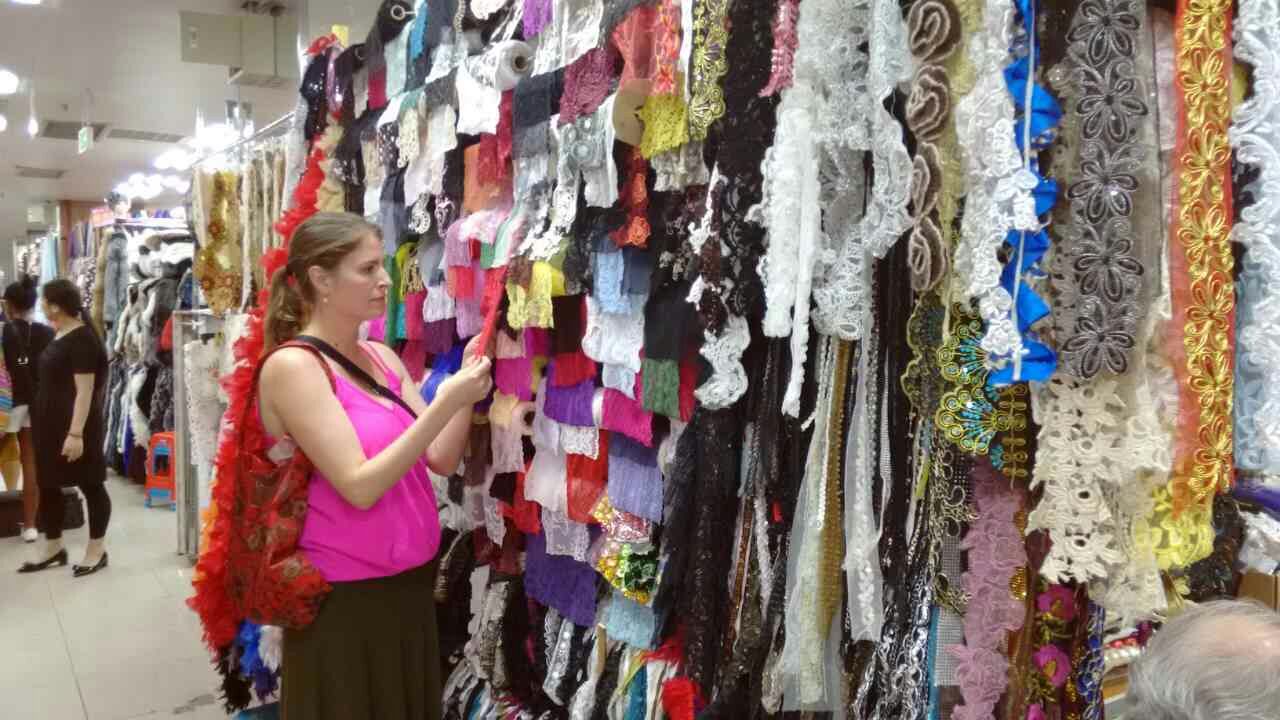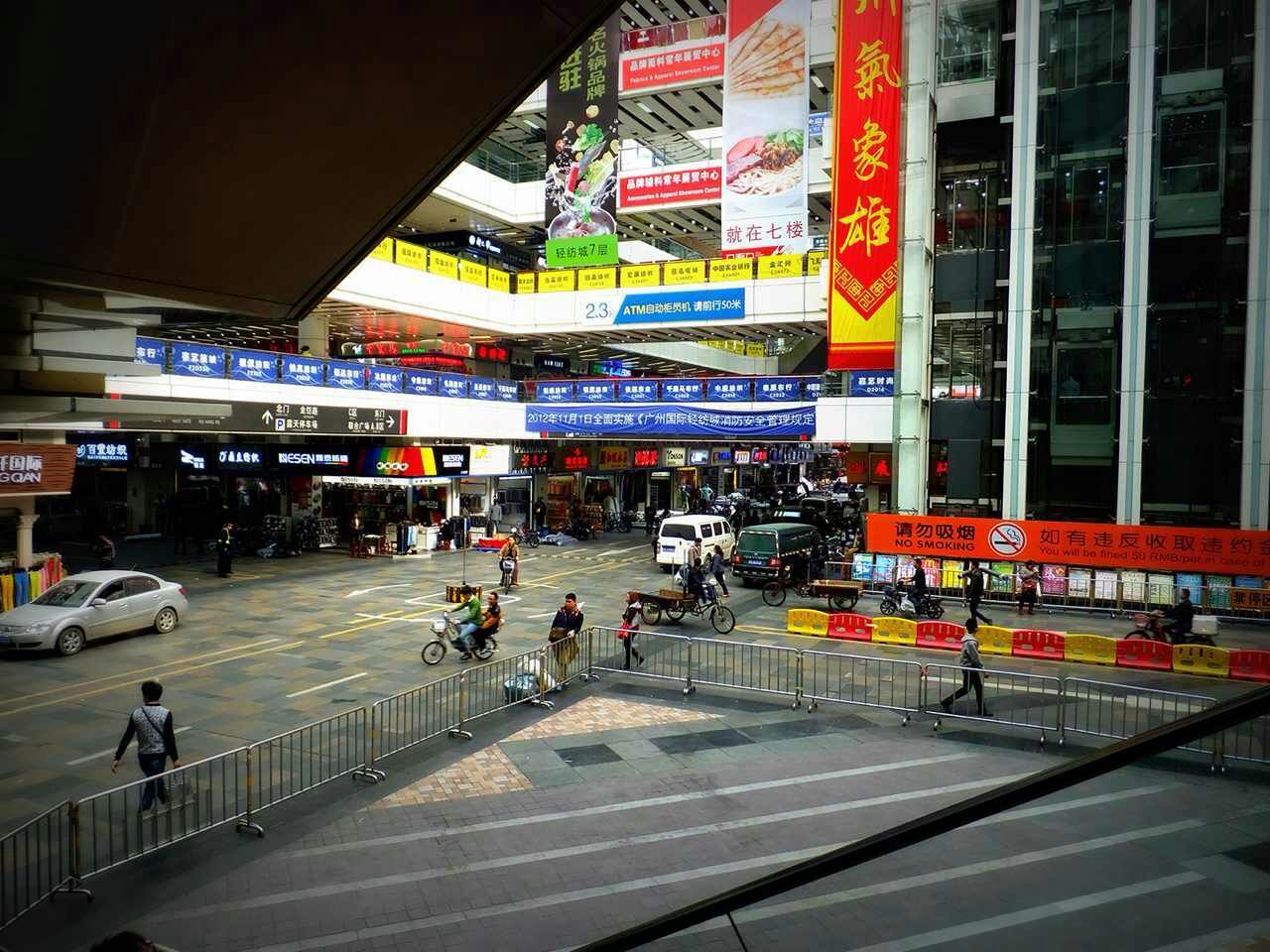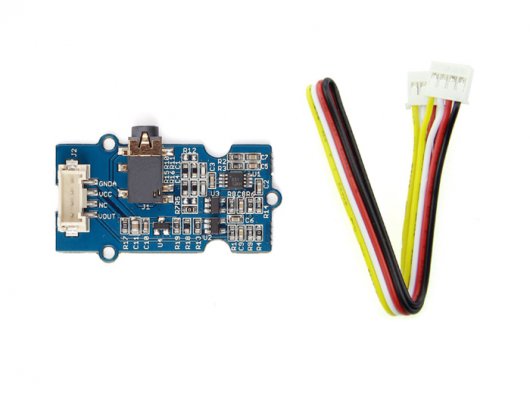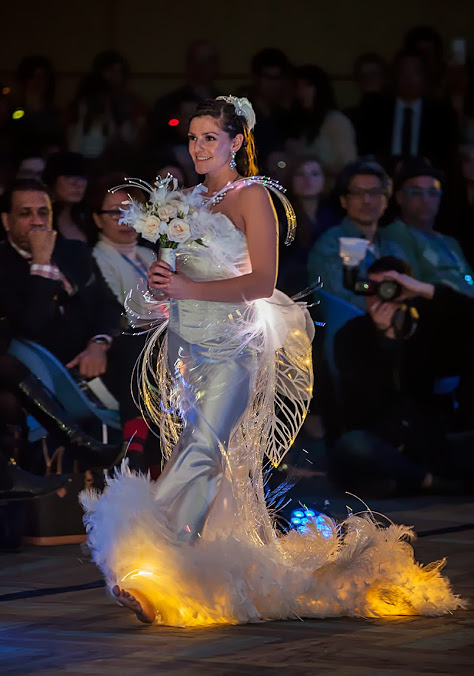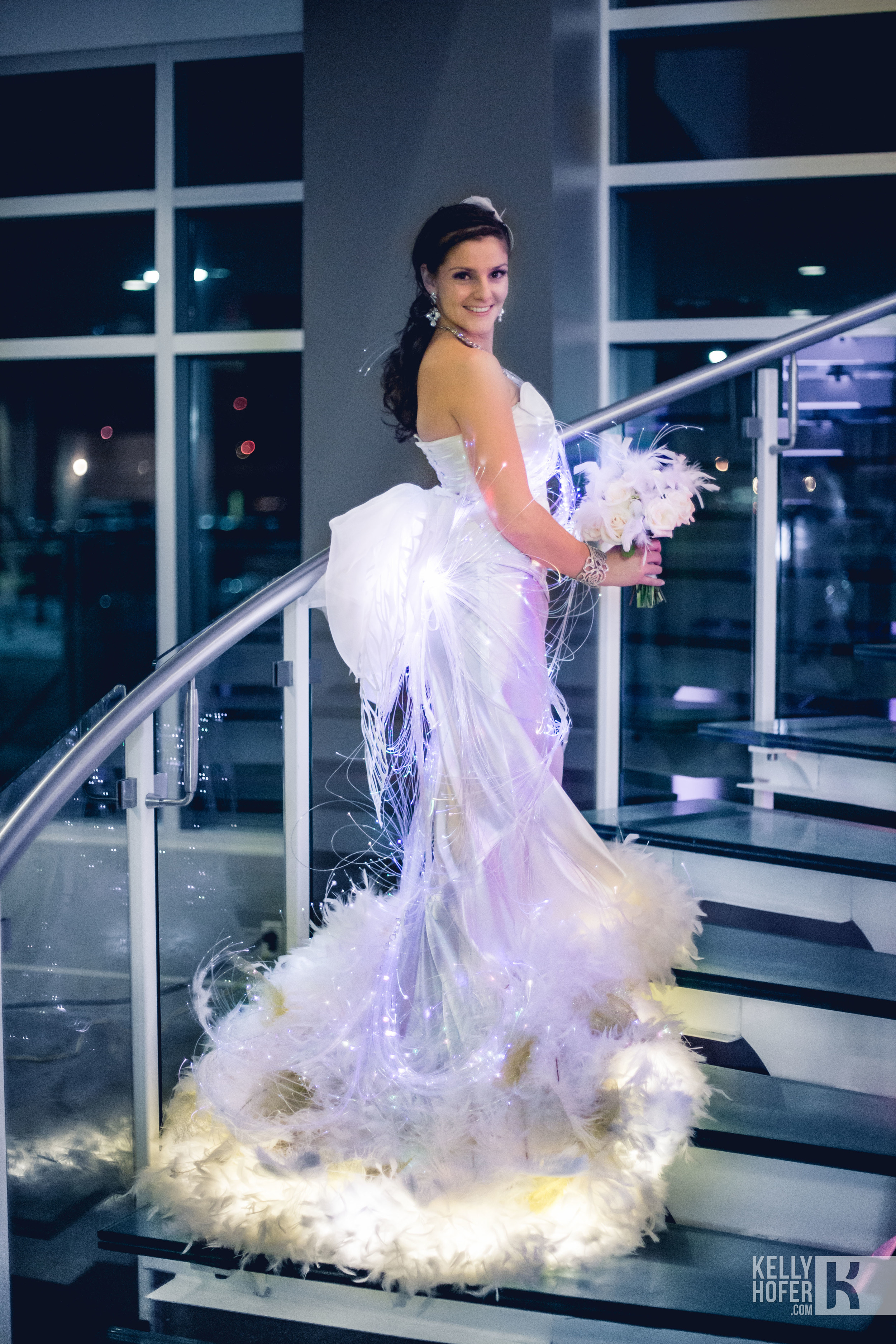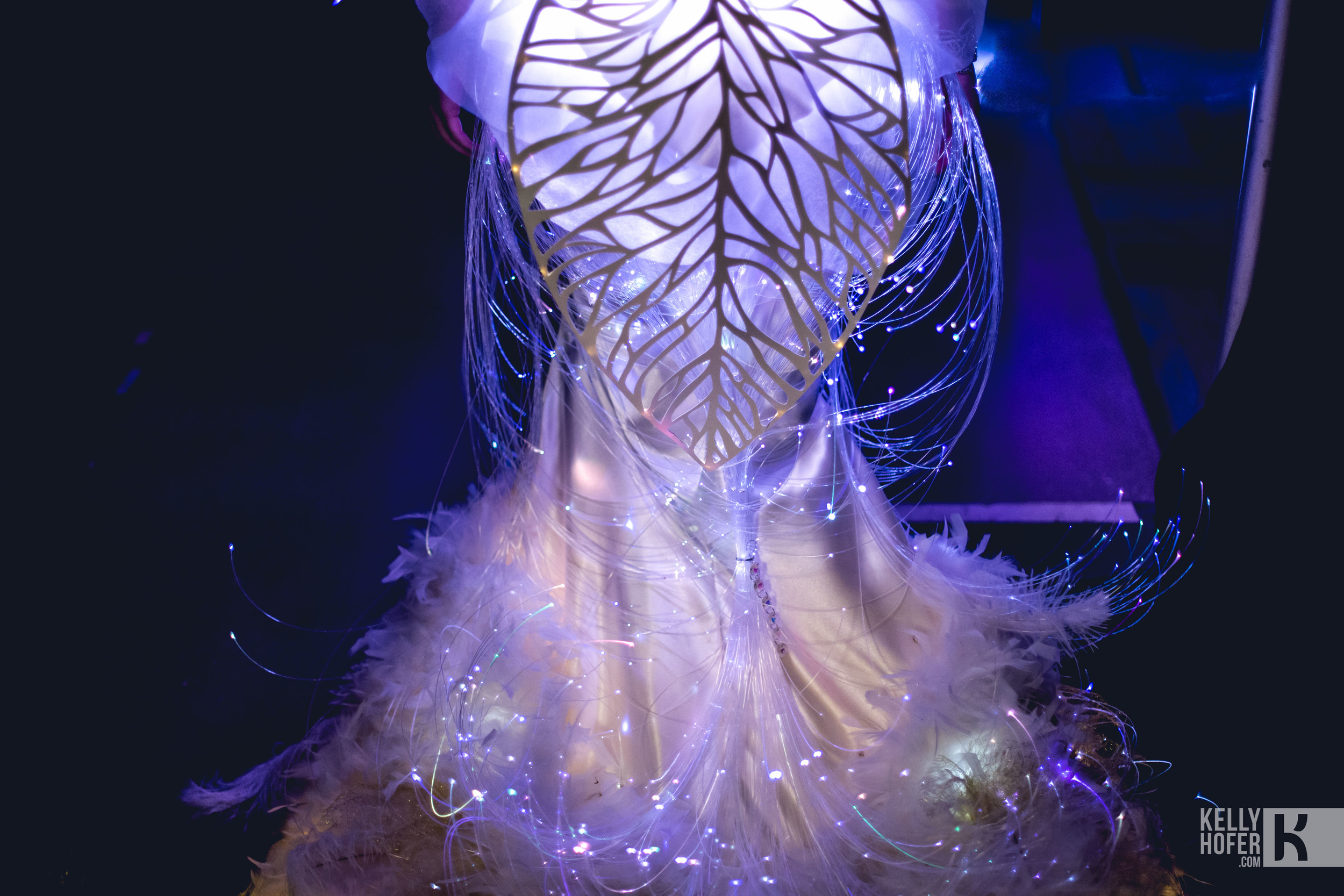For the construction, I glued the whole circuit onto a flexible Plastic board that slipped into the pockets and then had everything connected. with smalls connectors. There were very few soldering joints that were off the board which greatly increases reliability.
I keep noticing this everywhere, the electronics industry is not set up for wearable tech. The circuits are not set up to be worn, everything is rigid, and square. The connections are all solder, which is really breakable and unreliable. The wires are a stiff plastic rather than silicon wire. The connectors are sharp edged square blocks of plastic. It's an endless stream of challenging materials to manipulate to best work in the wearable tech environment. And that is arguably the greatest challenge when designing interactive fashion, using hardware designed for boxes and stable surfaces, and place them on the body, which has the most unpredictable qualities: sweat, stretching, bending, pinching and softness.
The Food.
I love noodles. I love Chinese food. But every day? can I have pizza please!!
I learned the true value of Multiculturalism in Canada: the food they bring into the country. I can go to a vietnamese restaurant one day, then a japanese the next, then an italian the next and a canadian one the next. It's true variety and I have always taken it for granted, but once I experienced the lack of it as is in Shenzhen, I value what we have a lot more.
The Internet.
Oh god. It was like revisiting the HBNI firewall that blocked out all useful websites on the Colony. Let me list the websites that are blocked in China that I use the most. Google maps, Gmail, Google Drive, Google Translate, Twitter, Facebook, Youtube, Dropbox, Instagram, Facebook Messenger, Play Store. To access any of these I used a slowass VPN which more often than not didn't work. They have substitute services for all of the ones listed, but it makes communicating with the rest of the world so bloody difficult. I don't understand the Chinese Government's decision to limit communications like that, it hinders relations with the rest of the world so much. However, if you love WeChat, then this is the place for you. If you plan on visiting China, get a good VPN before you arrive, and install a bunch of apps that you know are not blocked, like Pleco, WeChat, Waygo, Shadowsocks and many more.
All of the good things.
There are just soooooooo many high-rises in Shenzhen. Everyone lives in apartment blocks which Is really nice, the denser population fills the streets and forces food shops and everything to be everywhere. Unlike Calgary's pancake building principals. It promoted people to interact and I love that.
The architecture in the major centers is quite astounding. Their atriums are 10 stories tall solid marble. LED lights everywhere lighting up their oddly short days. The buildings are either tiny packed shops or grandiose marble slabs of polished space. I enjoyed that juxtaposition. I'm imagining their thinking to be: Lets have the buildings be functional if need be, but every once in a while let's be overwhelmingly ostentatious.
The electronics Market. I'm so envious of that, it's hard not be be innovative with that in your city. It's overwhelming how much choice there is. How cheap that choice is, and how far they've taken innovation in technology in that city.
The fabric and knockoff markets are equally as overwhelming. Everything is just so inexpensive. However the constant hawking of vendors as I walked by just irritated me so I loudly rejected their offer with a harsh "NO!". The ones that noticed your interest in their product and then followed you around asking you what you wanted were especially obnoxious. It was like mosquitoes on a muggy day in Manitoba, I love attention but not from you.
The greenery is mind blowing. You could travel down a major thoroughfare through downtown and see only trees, shrubs and flowers. The roads are inescapably encased in the lushest of greenery, with immaculately trimmed shrubs and fully blooming flowers. Even the overpasses had an endless stream of flower pots on the side to give the illusion of there being a garden in the air. Lovely, so very lovely.


































